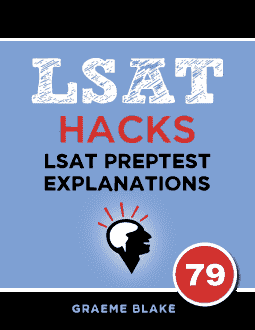Game Setup
Time on first attempt: 11:49
See “repeating games” at bottom of section
—————
I think this is a hard game. I can’t be certain – when doing it for the first time, I got interrupted. So maybe it was just distraction that caused my poor performance. I don’t want to do an overlong intro, so if you’re interested in what happened to me personally, check the end of this setup page.
Ok, on to the setup. This is a three group grouping game, which you can draw like this:

I’ve already drawn rules 1 and 2 on the diagram, since they’re easy to represent. O and P aren’t 1st, and M is assigned to area 3.
Note that I’ve drawn three not rules by diagram 1. P, O and M can’t go there. Why did I draw M? Isn’t that already obvious since I drew M in group 3?
A key concept in logic games is “the most restricted point”. Often, a game will depend on recognizing that one area is particularly tricky.
That’s group 1 in this case. Since M, P and O can’t go there, that means that only J, K and L can. And the setup says at least one person must go in group 1. So, if a question places K and L in group 2, for example, then J must go first: they’re the only one left who can.
The next rule lets us split the game into two scenarios: the scenario where L is with M, and the scenario where L is with K:

Note that in the first diagram, none of L, M, P or O can go first. That means at least one of J and K must. We also know that K can’t be third, because M is there, and L must go with either K or M, but not both of them.
In the second diagram, KL can go either 1st or 2nd. You could draw this as two separate scenarios, but I think that’s overkill – in this game the questions often have you draw in a way that discards the scenarios. They’re helpful to have as a general framework, but you don’t want them to be too brittle.
(When to keep two scenarios and when to make three is an intuitive judgment that comes as you do many games of this type)
The final rule says that if O is 2nd, then JK are together. If O isn’t second, JK are separate:

This is one you’ll have to commit to memory, as it will often come up when making scenarios for questions. You also must remember the rule from the intro paragraph: at most three rangers can be in a group.
Only J, K and L can go first
There’s one thing I want to highlight from the setup. If you look at the two scenarios a few paragraphs up, you’ll see that there are not rules which say that M, P, and O can’t go first. And there are only six rangers in the game. So if M, P and O can’t go first, who can?
Only J, K and L. And this combo is further restricted by the fact that L must go with K or M (rule 3). So, J and K are the only rangers with the unrestricted ability to go first.
The game will play on this deduction a lot. That’s why it’s really worth it to focus on the most restricted points in games, and keep them in your mind as you do the questions.
That’s pretty much it for the setup. If you remember these two scenarios and that only J, K and L can go first, you can quickly modify the scenarios for the individual questions.
(Note that to avoid clutter, I reduced the number of not rules on my diagrams for individual questions. When doing games I usually put more details like not rules on the main diagram, but remove some of them for local diagrams. And in the case of these explanations, it simply made the diagrams easier to fit with the text. But you definitely need to know that M, P and O can’t go first.)
How I screwed up the first time, and why reading all the answers makes sense
So I promised I’d tell you more about my mistake. As I was doing the game, I figured out that group 1 was special. I saw that J or K had to go there. But I restricted things too far: I forgot that L can go with K. So I drew two scenarios, one with J in 1, and one with K in one. I forgot the KL scenario.
Normally, this kind of mistake would lead to me having zero right answers on a question, or two right answers. But in this case, I always found an answer that seemed plausible, and only one. So, this game hit a blind spot in my system. Normally, errors are self-correcting, but in this case they were not.
I have not yet figured out what process I can add to my system to prevent this. But I’ll be thinking about it. Whenever you make a mistake, you should always consider why the mistake happened, and try to modify your system so it won’t happen again.
(Of course, in this case it’s possible this error only happened for me because I was majorly interrupted in the middle of this game.)
But this mishap definitely shows the value of reading all answers. Because the thing is, I make setup errors frequently. But normally, reading all the answers lets me notice something is wrong, because either no answers seem right on a question, or two answers do. This game was the freak exception where that system didn’t work, and it proves its value. I missed this game, but the system has saved me on many, many more.

Want a free Logic Games lesson?
Get a free sample of the Logic Games Mastery Seminar. Learn tips for going faster at logic games


I still don’t understand why M can’t go into area 1 when the rules states that M is assigned to area 3 (not only). With that in mind, can’t M go into either area 1 OR area 2, in addition to area 3? Thank you.